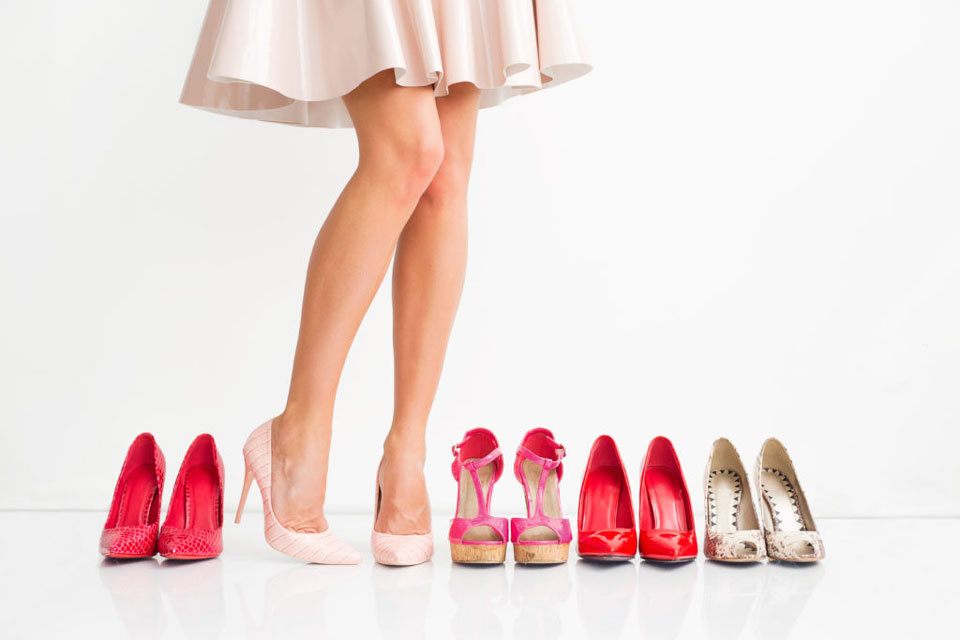If there’s one thing we learned from the story of Cinderella, it’s that a new pair of shoes can be life-changing. And if there’s one thing we’ve learned from our 20 years of closet experience, it’s that the right closet shoe storage can change a shoe lover’s life. For many shoe addicts, a customized closet is something right out of a fairy-tale dream. (In fact, it might even make you more starry-eyed than the idea of a Prince Charming!) But what are the laced-up facts about closet shoe storage? Here’s what you need to know:

All Shelves Are Not Created Equal: Just like heel heights, shoe shelves come in a variety of different height options.
Angled shelving: Slanted (a.k.a. angled) shelves are probably the most popular form of shoe storage. The slant allows a better visual so you can pick out your shoes with ease and create a wow-factor display while you’re at it. This type of shelving is generally only meant for shoes (so using it for other storage is out) and it takes up more space than other types of shoe storage. Shoe length is also an important factor of angled shelving; the slanted shoe shelf has a lip on the front, so some men’s shoes may be too long to fit inside a standard panel and customized panels will be needed.
Flat shelving: As the name implies, these shelves are of the classic, flat variety. They take up less space than angled shelves and can be made adjustable—which means they can adapt to your changing shoe collection or become storage for other items as well. The view isn’t as good as with angled shelving, but flat shelving will provide more storage in less space.
Cubbies: Remember that grid of boxes you used in Kindergarten to store lunchboxes? The same principle applies to shoe storage cubbies, which usually hold a pair of shoes (or two) within each box. This method of shoe storage is not necessarily practical in the long-term as changing shoe styles may lead you to need more or less space from one year to the next. (Just think of high-tops coming back in fashion.) If you put multiple pairs of shoes into each cubby, it may become jumbled rather than organized. Some folks find cubbies helpful for sports cleats or flip flop storage in garages or mudroom areas.
Seasonal Storage Can Make Life Easier: We probably don’t have to tell you that shoes change with the seasons just like leaves. Well, you can tailor your shoe storage to changing seasons, too. Cabinets, higher shelves, and other tucked-away storage can temporarily retire your winter shoes until the next snowfall or hide your flip flops until your next beach trip. Not only will this offer more space for your current favorite shoes, it will also help you get ready faster—no more searching through off-season boots for today’s loafers.
Shoe Storage Goes Beyond Shelves: While we love a good shoe shelf, there are other ways to improve your shoe storage. Outfit your closet or mudroom with a boot bench. Try pull-out wood drawers that can organize and conceal. Or simply look at shoe shelves from a new and creative perspective and opt for differing heights, corner shelving, and more.
We’d like to think that after Cinderella had those life-changing glass slippers, she scored a few more wonderful pairs of shoes—and her dream shoe storage, too. If you’d like to talk about a shoe storage update of your own, stop by Strickland’s Home soon!